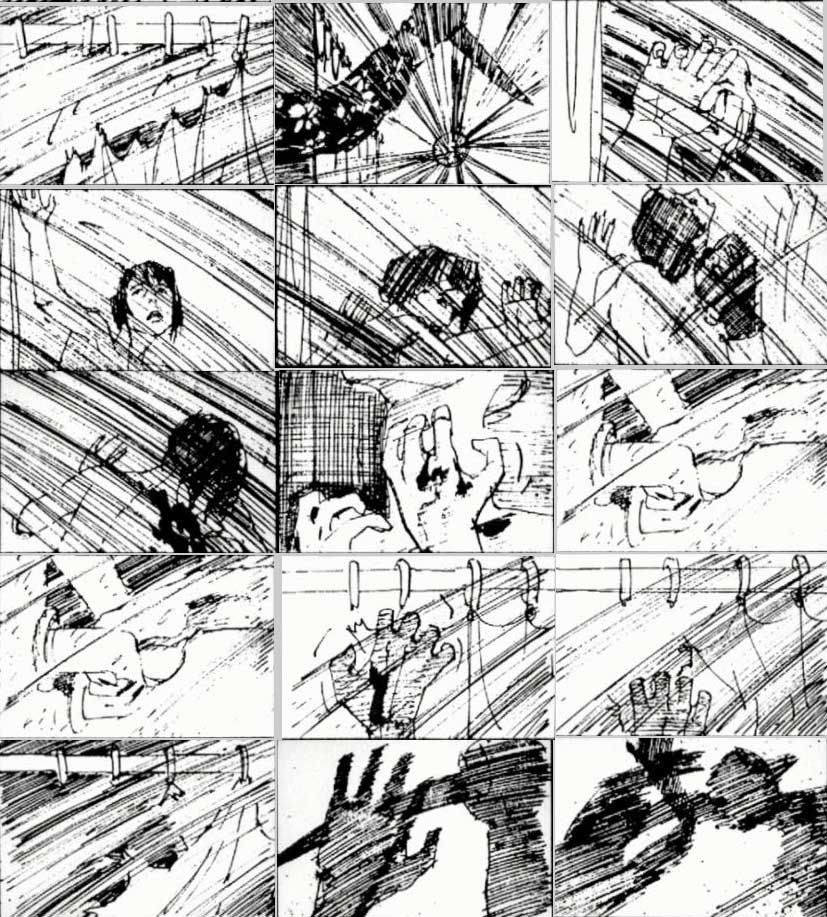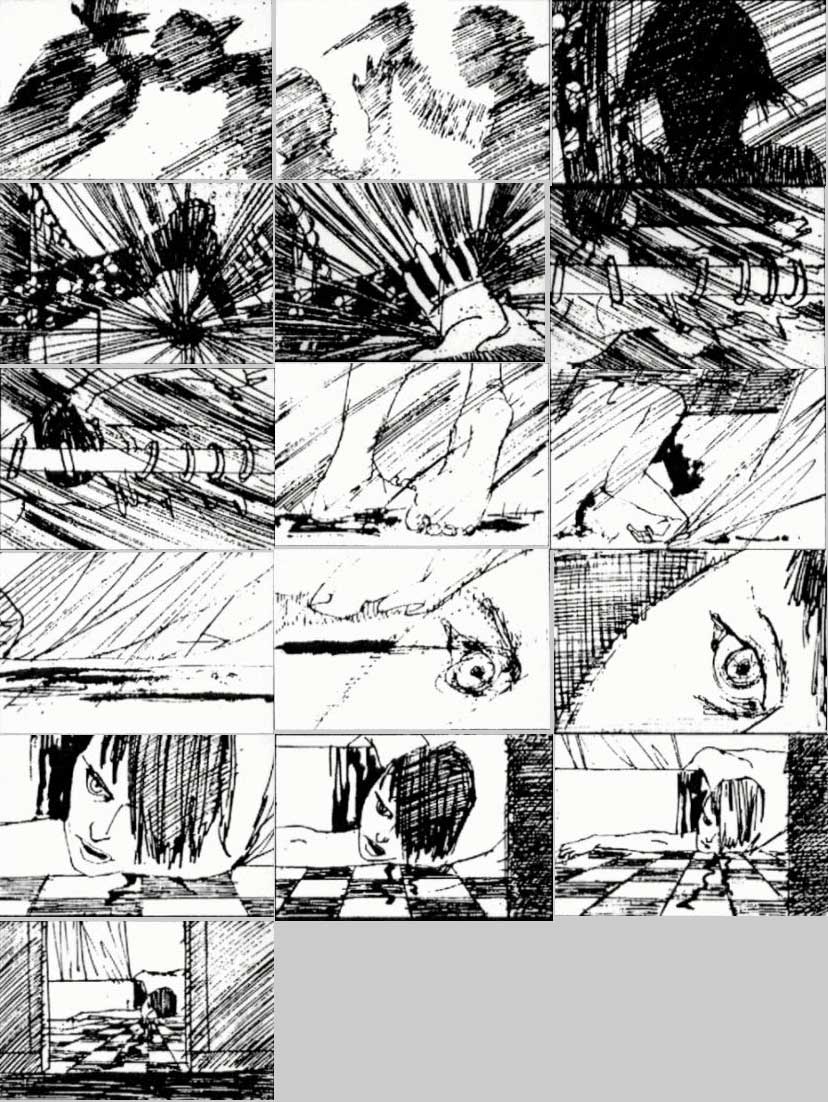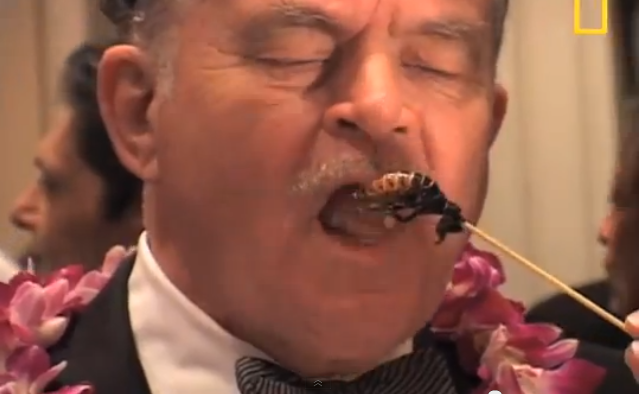[youtube=http://www.youtube.com/watch?v=MJuY8p8VeHA&w=700] We Close Our Eyes - a lesson in rhythm
[youtube=http://www.youtube.com/watch?v=tGTwSNPqAqs&w=700] Sixty years ago, the BBC filmed a train journey from London to Brighton, squeezed into just four minutes. Thirty years ago, we did it again. Now we are bringing it up to date, to see how much has changed - and how much is still the same. Here's all three journeys side by side.
The soundtrack is Star Guitar, by The Chemical Brothers.
Via Kottke.
[vimeo http://vimeo.com/68901496 w=700&h=390] I won't explain it, just watch it. Easily one of the best things I've seen this year.
+
From the Vimeo description:
Eighteen years ago a slight lapse in concentration crushed Pascale's dreams of surfing. But with the help of a family friend and a roll of duct tape; she can now call herself a surfer.
Pascale Honore & Tyron Swan
Support their journey West at pozible.com/DuctTapeSurfing | Facebook.com/DuctTapeSurfing
Film/Edit : Mark Tipple MarkTipple.com | Facebook.com/MarkTipplePhoto
Music : Halfway House, Apricot Rail music.HiddenShoal.com | Facebook.com/ApricotRail
Saw this on Kottke, it's really very good. Italian director Simone Rovellini has put a host of videos, gifs and more together for his Exploding Actresses tumblr. Actresses: [youtube=http://youtu.be/q2Axn0xpufM&w=700]
HAHAHAHA!
And princesses: [youtube=http://youtu.be/i6cb0ggl8bQ&w=700]
...and it's all in the best possible taste! [youtube=http://www.youtube.com/watch?v=ym7IEBntjuY&w=700]
[youtube=http://www.youtube.com/watch?v=Pcq8KJrngjk&w=700]
Amazing. Click to enlarge. Via Potrzebie.
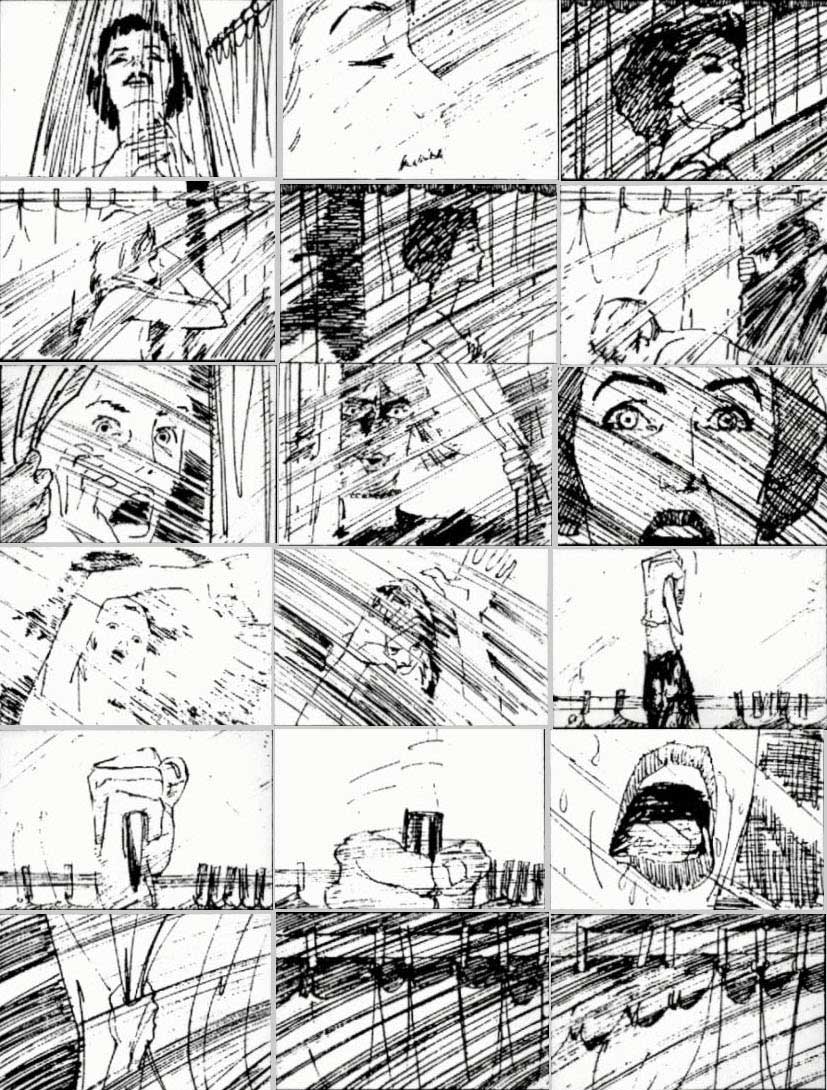
Wikipedia sez:
During his 40-year career Bass worked for some of Hollywood's most prominent filmmakers, including Alfred Hitchcock, Otto Preminger, Billy Wilder, Stanley Kubrick and Martin Scorsese. Among his most famous title sequences are the animated paper cut-out of a heroin addict's arm for Preminger's The Man with the Golden Arm, the credits racing up and down what eventually becomes a high-angle shot of a skyscraper in Hitchcock's North by Northwest, and the disjointed text that races together and apart in Psycho.
Bass designed some of the most iconic corporate logos in North America, including the Bell System logo in 1969, as well as AT&T's globe logo in 1983 after the breakup of the Bell System. He also designed Continental Airlines' 1968 jet stream logo and United Airlines' 1974 tulip logo which became some of the most recognized airline industry logos of the era.
Here's his title sequence for The Man With The Golden Arm, made in 1955: [youtube=http://www.youtube.com/watch?v=sS76whmt5Yc&w=700]
[youtube=http://www.youtube.com/watch?v=nAIyPGsMjQU&w=700]
Dangerous. Extreme. Call it what you will. Just watch out.
[youtube=http://youtu.be/GJekhT8RElI&w=700]
[youtube=http://youtu.be/eQBVNaSGWJQ&w=700] Quick and clever skit by "rathergoodstuff" – click the link, you'll recognise some of their stuff.
[youtube=http://www.youtube.com/watch?v=SleYHOcLjOg&w=700]
[youtube=http://www.youtube.com/watch?v=JorPc1F2-U8&w=700] [31.08 for the famous bit, but I reckon do the whole thing]
[youtube http://youtu.be/j2ghVpNCVe4&w=700]
...it involves doodles, a bit of tracing paper or some cheese wrap and a lot of fun. Found it on boooooooooom, one of my favourite arty sites. Such a genius idea, I love it. Was screened at Pictoplasma last year. [vimeo http://vimeo.com/34698421 w=700&h=390]
[vimeo http://vimeo.com/58933055 w=700&h=390]
James Brown, the Godfather of Soul, the hardest working man in showbusiness, soul brother number one, founding father of funk and so much more. His musical career spanned an astonishing six decades, he was a major influence on rapping while he's beats...well, he's the most sampled artist. Here's a short version, a few highlights before the quotes, but there's a fascinating Wikipedia entry on his life and career here which is well worth checking out.
He first hit fame in the Fifties as part of a group called the Famous Flames, touring on the "chitlin' circuit" (the opposite of the Borscht Belt); from then on, it was largely an upward arc as he revolutionised music and became one of 20th century music's major influences.
And yet, while he's undeniably a force of nature, he also has the record as the artist with the most singles on the Billboard Hot 100 without ever hitting number one on that chart.
The James Brown tour was one of the best in the business - or certainly the biggest, with an enormous band and a bigger retinue - the James Brown Revue had something like 40 or 50 people in it, all of them busing around the US, doing 330+ shows a year, most of them one-nighters - and most of them featuring the infamous cape routine, when he'd pretend to collapse from the emotion and be escorted from the stage with a cape over his shoulders. I think Elvis copied this too. He died in 2006 of heart failure.
[youtube=http://www.youtube.com/watch?v=YyEEXxHMLzQ&w=700]
He wasn't joking when he said he had it tough. Born in 1933, as a young child, Brown and his family lived in extreme poverty in South Carolina. His parents separated when he was two, when his mum ran out on his dad for another man. He stayed with his dad (and his father's assorted girlfriends) until he was six, when he was sent to live with an aunt who ran a brothel.
He might have lived with relatives, but he still spend a lot of time on his own, hanging out or on the hustle. He worked hard as a kid, shining shoes, sweeping out stores, selling and trading in old stamps, washing cars and dishes and singing in talent contests. Brown also performed buck dances for change to entertain troops from Camp Gordon at the start of World War II as their convoys traveled over a canal bridge near his aunt's home.
He had an early passion for music, too. Between earning money, Brown taught himself to play a harmonica given to him by his father. He learned to play some guitar from Tampa Red, in addition to learning to play piano and drums from others he met during this time. He formed his first vocal group, the Cremona Trio, when he was just 12. That same year they won local talent shows at Augusta concert halls such as the Lenox and Harlem theaters. He was forced out of school in seventh grade for wearing "insufficient clothes".
When James Brown was sixteen, he was convicted of armed robbery and sent to a juvenile detention center in Toccoa. While in prison, he formed a gospel quartet with fellow cell mates Johnny Terry, "Hucklebuck" Davis and a person named "Shag", and made his own instruments – a comb and paper, a washtub bass, a drum kit made from lard tubs, and what he called "a sort of mandolin [made] out of a wooden box." Due to the latter instrument, Brown was given his first nickname, "Music Box". In 1952, while still in reform school, Brown met future R&B legend Bobby Byrd, who was there playing baseball against the reform school team.
Byrd's family helped Brown secure an early release in 1952 after he'd done three years of his sentence. The authorities agreed to release Brown on the condition that he would get a job and not return to Augusta or Richmond County and also under the condition that he find a decent job and sing for the Lord - as he had promised in his parole letter. After stints as a boxer and baseball pitcher in semi-professional baseball (a career move ended by a leg injury), he finally turned his energy to music.
The rest, as they say, is history. Notable highlights though...
[youtube=http://www.youtube.com/watch?v=54y_XDKNxPg&w=700]
Influenced by having been booted out of school as a youth, his main non-musical activism was in preserving the need for education, particularly among black youths, who consisted of large school dropout rates in the mid-1960s. As a result of this, Brown wrote "Don't Be a Drop-Out", which was released in 1966 under the "James Brown and The Famous Flames" billing - though the actual recording featured none of its members with the exception of Brown (not to be confused with Dolly Parton's song the same year, "Don't Drop Out". Royalties from the song were given to charity, he was rewarded by President Johnson, and he always advocated, in songs and in speeches, the importance of education in school. When he was older, he'd occasionally go back to his childhood neighbourhood in Augusta and give out money and other things to those in need. A week before he died he visited an orphanage and gave out toys and turkeys.
Civil Rights. Brown and his band first participated in benefit concerts for civil rights groups starting in 1965, performing for organizations such as the SCLC. In 1968, Brown recorded two socially conscious songs, "America Is My Home" and "Say It Loud - I'm Black and I'm Proud". The former song, in which Brown performed a rap, advocated patriotism, pointing out that America was one of the few countries where "you can start as a shoeshine boy and shake hands with the President" and exhorting listeners to "stop pitying yoursel[ves] and get up and fight." This coincided with Brown's participation in performing in front of troops during the Vietnam War.
"Say It Loud" was written in response to pressure from black activists for Brown to take a bigger stance on their issues. The song was inspired by television coverage of black on black crime as well as concurrent issues concerning the riots that occurred following the assassination of Martin Luther King, Jr.. Brown wrote the words and asked his bandleader at the time, Alfred "Pee Wee" Ellis, to compose the music. The song's lyrics helped to make it an anthem to the civil rights movement. Some critics[who?] later stated that the song had gotten through to black youths better than some civil rights leaders' speeches. Throughout the remainder of his career and after his death, Brown was credited by some of his admirers for "destroying the word Negro from the vocabulary and making it cool to call yourself 'Black'." Brown performed "Say It Loud" only sporadically after 1969, later stating in his 1986 autobiography:
"The song is obsolete now... But it was necessary to teach pride then, and I think the song did a lot of good for a lot of people... People called 'Black and Proud' militant and angry – maybe because of the line about dying on your feet instead of living on your knees. But really, if you listen to it, it sounds like a children's song. That's why I had children in it, so children who heard it could grow up feeling pride... The song cost me a lot of my crossover audience. The racial makeup at my concerts was mostly black after that. I don't regret it, though, even if it was misunderstood.”
His personal life wasn't always settled. Gruelling schedule, always on tour. For the first 25 years of his professional career, he had a drug-free policy for his entire entourage and band. A few people were fired for going against his word, especially those who used drugs and alcohol. Noting of this policy, some of the original members of Brown's 1970s band, The J.B.'s including the Collins brothers, Catfish and Bootsy, intentionally got high on acid during a 1971 concert gig, causing Brown to fire them after the show because he had suspected them to be on drugs all along, according to Bootsy Collins. Towards the mid-Seventies though, he was allegedly using them himself anyway. In the mid Eighties he got into an angel dust storm with then-wife Adrienne Rodriguez. There were a few arrests for domestic violence.
Still though, an amazing performer. An amazing musician, poet, lyricist, dancer. A serious talent, in a man's world. Here are some quotes. They're not necessarily all amazing, but what is amazing is the context and background of some of the things he said. (ps - If you like this, do please share, and read some of my other "The Guy Quote" posts here. )
[youtube=http://www.youtube.com/watch?v=MfK-doEcFaA&w=700]
Die on your feet don't live on your knees. I've outdone anyone you can name - Mozart, Beethoven, Bach, Strauss. Irving Berlin, he wrote 1,001 tunes. I wrote 5,500. Hair is the first thing. And teeth the second. Hair and teeth. A man got those two things he's got it all.
When I'm on stage, I'm trying to do one thing: bring people joy. Just like church does. People don't go to church to find trouble, they go there to lose it. … I'm not going to be joining ZZ Top. You know they can't play my stuff. It's too complicated. The one thing that can solve most of our problems is dancing.
I don't really care what people think, ... I just do my own thing. ... I like being loud and letting people know I'm there. Retire for what? What would I do? I made my name as a person that is helping. I'm like Moses in the music business. I'm twice as old, but I feel good.
I got a wife who likes expensive things, so she takes all the cash. I taught them everything they know, but not everything I know. Sometimes you struggle so hard to feed your family one way, you forget to feed them the other way, with spiritual nourishment. Everybody needs that.
It doesn't matter how you travel it, it's the same road. It doesn't get any easier when you get bigger, it gets harder. And it will kill you if you let it. I used to play one job and have 125 pair of shoes on the floor. What was I doing? I couldn't wear but one pair. My expectations of other people, I double them on myself.
Now, we own a publishing house that's way up in the billions of dollars and gets bigger and bigger. That's probably the only thing that makes me look like Bill Gates! Sometimes I feel like I'm a preacher as well, 'cause I can really get into an audience. The hardest thing about being James Brown is I have to live. I don't have no down time.
I did the thing with bonds, which was about 30 million dollars, and didn't get none of the money on them. They had a chance to see me look good and perform and be so neat again. A lot of young people felt shaken, 'cause there I was, 70 years old, looking half as young as they did! I only got seventh-grade education, but I have a doctorate in funk, and I like to put that to good use.
Michael Jackson has a very good heart. He was crying when he was giving me the award, 'cause his mind went back over the early days. I started Michael [Jackson] years ago. I saw him in Gary, Indiana, and we'd have him on the talent shows. He kind of emulated me, and did the best he could. My son don't have to say it loud, I'm black and I'm proud. He don't have to be called those crazy names.
They had a chance to see me look good and perform and be so neat again. A lot of young people felt shaken, 'cause there I was, 70 years old, looking half as young as they did!
I just thank God for all of the blessings. I used to think like Moses. That knocked me down for a couple years and put me in prison. Then I start thinking like Job. Job waited and became the wealthiest and richest man ever 'cause he believed in God.
[youtube=http://www.youtube.com/watch?v=owJGSyhMT0U&w=700]
I want to say to you, help yourself, so you can help someone else. I've been held responsible for taxes I know nothing about. You can take care of yourself, and God helps those who help themselves.
I had to tell about my colonic, which expresses the fact why I'm so neat today as opposed to a few years ago. I never knew that the weight made that much difference.
I named my new son James Joseph Brown II. I think he's going to be a lot better than I was. I think the best thing about being James Brown is looking at my little son. Hopefully I can make my son a role model to a lot of people. I think what I came through is great, but my son can take it to another level, not having to fight racism. His mother's a Norwegian and I'm mixed up four or five times, so he can face the world.
I was stillborn. The midwives laid me aside, thought I was really gone. I laid there about an hour, and they picked me back up and tried again, 'cause my body was still warm. The Good Lord brought me back. I'd like to cut down on the work a little bit. I'm kidding about having only a few dollars. I might have a few dollars more.
My expectations of other people, I double them on myself. Thank God for the journey. The hardest thing about being James Brown is I have to live. I don't have no down time.
When God took it, he accepted it; when he brought it back, he accepted it. That's what's happening with me. You can't teach others if you are living the same way.
[youtube=http://www.youtube.com/watch?v=UAATcEJOWXo&w=700]
[youtube=http://www.youtube.com/watch?v=hcvQxaUClNw&w=700]
If you like this, do please share, and read some of my other "The Guy Quote" posts here.
And here's a documentary about him: [youtube=http://www.youtube.com/watch?v=MBKz8pDNuto&w=700]
If you like this, do please share, and read some of my other "The Guy Quote" posts here.
[vimeo http://vimeo.com/56921333 w=700&h=390]
[vimeo http://vimeo.com/56093731 w=700&h=390]
The boots.
[youtube=http://www.youtube.com/watch?v=PB-wmOYelnM&w=700]
The smaller, quieter half of the magician duo Penn & Teller writes about how magicians manipulate the human mind [from this article in The Smithsonian magazine]
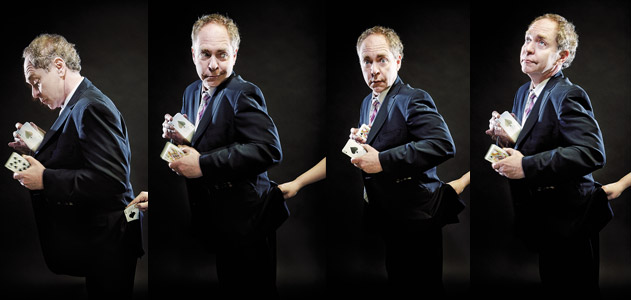
In the last half decade, magic—normally deemed entertainment fit only for children and tourists in Las Vegas—has become shockingly respectable in the scientific world. Even I—not exactly renowned as a public speaker—have been invited to address conferences on neuroscience and perception. I asked a scientist friend (whose identity I must protect) why the sudden interest. He replied that those who fund science research find magicians “sexier than lab rats.”
I’m all for helping science. But after I share what I know, my neuroscientist friends thank me by showing me eye-tracking and MRI equipment, and promising that someday such machinery will help make me a better magician.
I have my doubts. Neuroscientists are novices at deception. Magicians have done controlled testing in human perception for thousands of years.
I remember an experiment I did at the age of 11. My test subjects were Cub Scouts. My hypothesis (that nobody would see me sneak a fishbowl under a shawl) proved false and the Scouts pelted me with hard candy. If I could have avoided those welts by visiting an MRI lab, I surely would have.
But magic’s not easy to pick apart with machines, because it’s not really about the mechanics of your senses. Magic’s about understanding—and then manipulating—how viewers digest the sensory information.
I think you’ll see what I mean if I teach you a few principles magicians employ when they want to alter your perceptions.
1. Exploit pattern recognition. I magically produce four silver dollars, one at a time, with the back of my hand toward you. Then I allow you to see the palm of my hand empty before a fifth coin appears. As Homo sapiens, you grasp the pattern, and take away the impression that I produced all five coins from a hand whose palm was empty.
2. Make the secret a lot more trouble than the trick seems worth. You will be fooled by a trick if it involves more time, money and practice than you (or any other sane onlooker) would be willing to invest. My partner, Penn, and I once produced 500 live cockroaches from a top hat on the desk of talk-show host David Letterman. To prepare this took weeks. We hired an entomologist who provided slow-moving, camera-friendly cockroaches (the kind from under your stove don’t hang around for close-ups) and taught us to pick the bugs up without screaming like preadolescent girls. Then we built a secret compartment out of foam-core (one of the few materials cockroaches can’t cling to) and worked out a devious routine for sneaking the compartment into the hat. More trouble than the trick was worth? To you, probably. But not to magicians.
3. It’s hard to think critically if you’re laughing. We often follow a secret move immediately with a joke. A viewer has only so much attention to give, and if he’s laughing, his mind is too busy with the joke to backtrack rationally.
4. Keep the trickery outside the frame. I take off my jacket and toss it aside. Then I reach into your pocket and pull out a tarantula. Getting rid of the jacket was just for my comfort, right? Not exactly. As I doffed the jacket, I copped the spider.
5. To fool the mind, combine at least two tricks. Every night in Las Vegas, I make a children’s ball come to life like a trained dog. My method—the thing that fools your eye—is to puppeteer the ball with a thread too fine to be seen from the audience. But during the routine, the ball jumps through a wooden hoop several times, and that seems to rule out the possibility of a thread. The hoop is what magicians call misdirection, a second trick that “proves” the first. The hoop is genuine, but the deceptive choreography I use took 18 months to develop (see No. 2—More trouble than it’s worth).
6. Nothing fools you better than the lie you tell yourself. David P. Abbott was an Omaha magician who invented the basis of my ball trick back in 1907. He used to make a golden ball float around his parlor. After the show, Abbott would absent-mindedly leave the ball on a bookshelf while he went to the kitchen for refreshments. Guests would sneak over, heft the ball and find it was much heavier than a thread could support. So they were mystified. But the ball the audience had seen floating weighed only five ounces. The one on the bookshelf was a heavy duplicate, left out to entice the curious. When a magician lets you notice something on your own, his lie becomes impenetrable.
7. If you are given a choice, you believe you have acted freely. This is one of the darkest of all psychological secrets. I’ll explain it by incorporating it (and the other six secrets you’ve just learned) into a card trick worthy of the most annoying uncle.
THE EFFECT I cut a deck of cards a couple of times, and you glimpse flashes of several different cards. I turn the cards facedown and invite you to choose one, memorize it and return it. Now I ask you to name your card. You say (for example), “The queen of hearts.” I take the deck in my mouth, bite down and groan and wiggle to suggest that your card is going down my throat, through my intestines, into my bloodstream and finally into my right foot. I lift that foot and invite you to pull off my shoe and look inside. You find the queen of hearts. You’re amazed. If you happen to pick up the deck later, you’ll find it’s missing the queen of hearts.
THE SECRET(S) First, the preparation: I slip a queen of hearts in my right shoe, an ace of spades in my left and a three of clubs in my wallet. Then I manufacture an entire deck out of duplicates of those three cards. That takes 18 decks, which is costly and tedious (No. 2—More trouble than it’s worth).
When I cut the cards, I let you glimpse a few different faces. You conclude the deck contains 52 different cards (No. 1—Pattern recognition). You think you’ve made a choice, just as when you choose between two candidates preselected by entrenched political parties (No. 7—Choice is not freedom).
Now I wiggle the card to my shoe (No. 3—If you’re laughing…). When I lift whichever foot has your card, or invite you to take my wallet from my back pocket, I turn away (No. 4—Outside the frame) and swap the deck for a normal one from which I’d removed all three possible selections (No. 5—Combine two tricks). Then I set the deck down to tempt you to examine it later and notice your card missing (No. 6—The lie you tell yourself).
Magic is an art, as capable of beauty as music, painting or poetry. But the core of every trick is a cold, cognitive experiment in perception: Does the trick fool the audience? A magician’s data sample spans centuries, and his experiments have been replicated often enough to constitute near-certainty. Neuroscientists—well intentioned as they are—are gathering soil samples from the foot of a mountain that magicians have mapped and mined for centuries. MRI machines are awesome, but if you want to learn the psychology of magic, you’re better off with Cub Scouts and hard candy.

